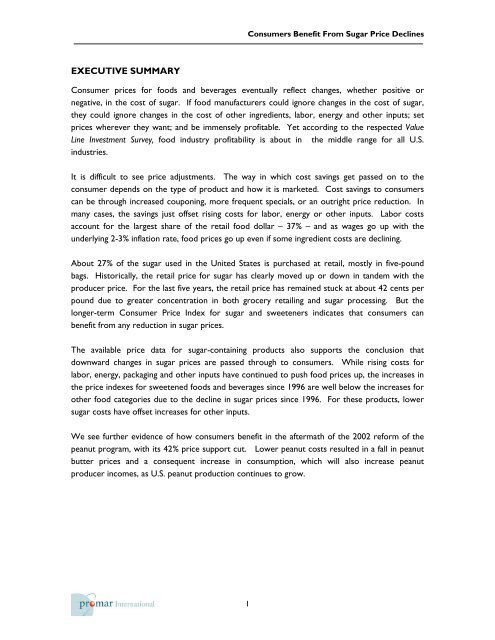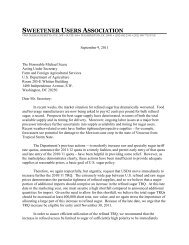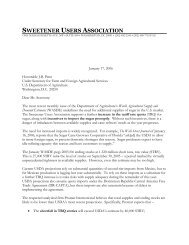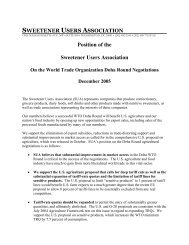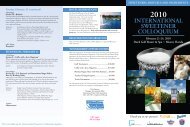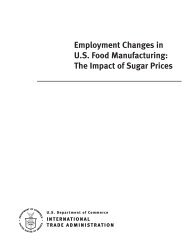Consumers Benefit From Competitive Sugar Prices - Sweetener ...
Consumers Benefit From Competitive Sugar Prices - Sweetener ...
Consumers Benefit From Competitive Sugar Prices - Sweetener ...
Create successful ePaper yourself
Turn your PDF publications into a flip-book with our unique Google optimized e-Paper software.
<strong>Consumers</strong> <strong>Benefit</strong> <strong>From</strong> <strong>Sugar</strong> Price DeclinesEXECUTIVE SUMMARYConsumer prices for foods and beverages eventually reflect changes, whether positive ornegative, in the cost of sugar. If food manufacturers could ignore changes in the cost of sugar,they could ignore changes in the cost of other ingredients, labor, energy and other inputs; setprices wherever they want; and be immensely profitable. Yet according to the respected ValueLine Investment Survey, food industry profitability is about in the middle range for all U.S.industries.It is difficult to see price adjustments. The way in which cost savings get passed on to theconsumer depends on the type of product and how it is marketed. Cost savings to consumerscan be through increased couponing, more frequent specials, or an outright price reduction. Inmany cases, the savings just offset rising costs for labor, energy or other inputs. Labor costsaccount for the largest share of the retail food dollar – 37% – and as wages go up with theunderlying 2-3% inflation rate, food prices go up even if some ingredient costs are declining.About 27% of the sugar used in the United States is purchased at retail, mostly in five-poundbags. Historically, the retail price for sugar has clearly moved up or down in tandem with theproducer price. For the last five years, the retail price has remained stuck at about 42 cents perpound due to greater concentration in both grocery retailing and sugar processing. But thelonger-term Consumer Price Index for sugar and sweeteners indicates that consumers canbenefit from any reduction in sugar prices.The available price data for sugar-containing products also supports the conclusion thatdownward changes in sugar prices are passed through to consumers. While rising costs forlabor, energy, packaging and other inputs have continued to push food prices up, the increases inthe price indexes for sweetened foods and beverages since 1996 are well below the increases forother food categories due to the decline in sugar prices since 1996. For these products, lowersugar costs have offset increases for other inputs.We see further evidence of how consumers benefit in the aftermath of the 2002 reform of thepeanut program, with its 42% price support cut. Lower peanut costs resulted in a fall in peanutbutter prices and a consequent increase in consumption, which will also increase peanutproducer incomes, as U.S. peanut production continues to grow.1


